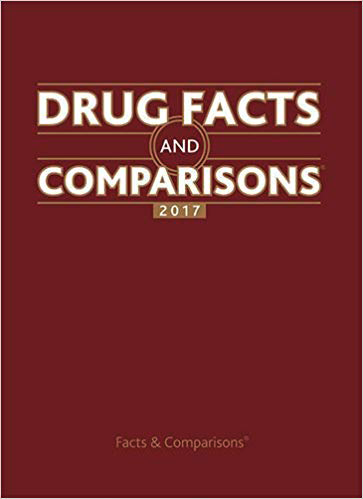4.4 Anatomical Classification of Drugs
To study and remember some of the generic and brand name drugs you will encounter, it is often easiest to consider them according to their classification by anatomical system or organ and/or by their pharmaceutical action. For example, metoprolol ER (Toprol XL) and lisinopril (Prinivil, Zestril) are in the cardiovascular (heart-blood system) category, and both are used to treat high blood pressure, but each lowers the blood pressure in a different way. That is, the mechanism of action, or method, of pharmacological action is different. Many patients may require two or more drugs—with different mechanisms of action—to provide adequate blood pressure control.
Drug Facts and Comparisons® (F&C) is a primary reference for considering drugs by their anatomical classifications and finding the generic substitutions. It provides factual, up-to-date information on drug product availability, indications, administration and dose, pharmacological actions, contraindications, warnings, precautions, adverse reactions, overdoses, and patient instructions. It is available as a hardbound copy and as an online subscription.

Drug Facts and Comparisons is a commonly used drug information resource. Pictured above is a hardbound copy, but the publication is also available online.
The rest of this chapter discusses the classifications in the same order that they are presented in the F&C:
Central Nervous System (CNS) Agents
Cardiovascular Agents
Systematic Anti-Infective Agents
Endocrine and Metabolic Agents
Respiratory Agents
Gastrointestinal Agents
Renal and Genitourinary Agents
Hematologic Agents
Biotechnology Drugs
Miscellaneous Drugs
 Safety Alert
Safety Alert
Make sure to read all boxed warnings as you get to know the drugs you will be working with.
Explaining how each drug mentioned in this chapter exactly works is beyond the scope of this overview. However, gaining a recognition of how drugs are pharmaceutically categorized for dispensing and becoming familiar with generic and brand drug names and their common indications is an essential component of the technician learning process and successfully passing the Pharmacy Technician Certification Exam. You will learn more about these in the community dispensing section of Chapter 7. Boxed warnings (which show up in patient, provider, and pharmacy personnel reference materials from the manufacturer, FDA, and drug reference collections) highlight dangerous side effects, interactions, and use.